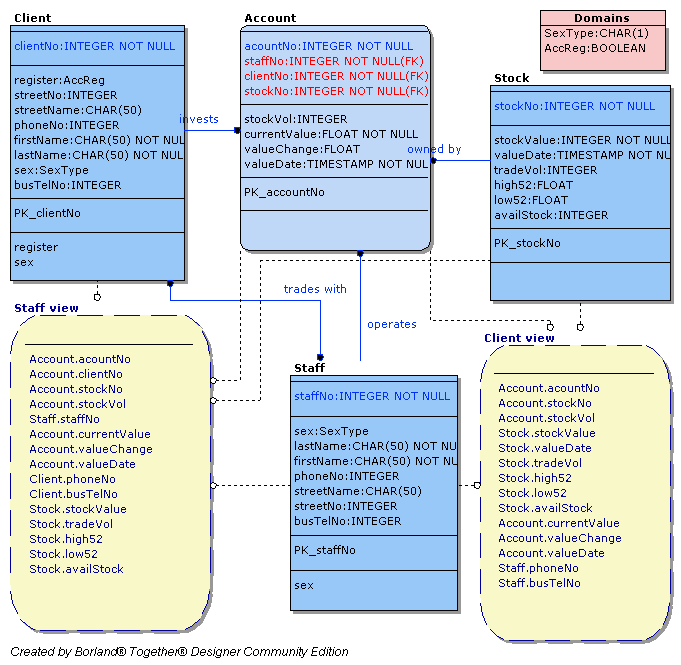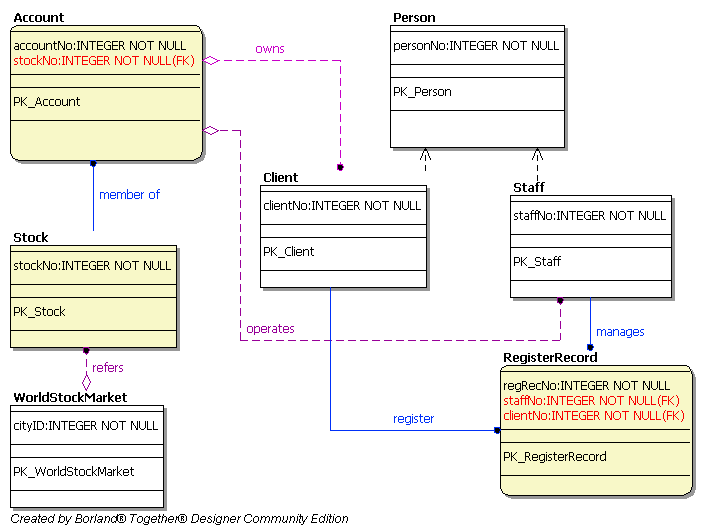Conceptual design
The top-down approach that collects users requirements by
the Fact-finding technique, the definitions of mission
statement, objectives and the conceptual data model by
Entity-Relationship schema.
Entity type identify
The entity types definitions as follow:
| Entity | Description | Alias | Occurence |
|---|---|---|---|
| Client | General term describing all users | User | Each member of Client can have many stocks |
| Stock | general term describing all stocks | StockProduct | Each member of Stock can have one owner, a value in WorldStockMarket |
| Staff | General term describing all staffs | Trader | Each member can have many Stocks and many Clients |
| WorldStockMarket | General term describing all Stock in the world | StockExchange | Each member might have different value in different Stock Exchange Center |
| Account | General term describing the accounts | Record | Each account only has one owner, Client or Staff |
Relationship identify
A table has built to identify the relationship between entity types.
| Entity name | Multiplicity | Relationship | Entity name | Multiplicity |
|---|---|---|---|---|
| Client | 1 .. * | Ownership | Stock | 1 .. 1 |
| Stock | 1 .. * | operated by | Staff | 1 .. * |
| Staff | * .. * | Trades with | Client | * .. * |
| Client | 1 .. * | Owns | Account | 1 .. 1 |
| Staff | 1 .. * | Manages | Account | 1 .. 1 |
| WorldStockMarket | * .. * | is comprise of | Stock | * .. * |
Attributes identify
| Entity name | Attribute | Description | Data type and length | Null | Multi-valued |
|---|---|---|---|---|---|
| Client | |||||
| Client | |||||
| Client | |||||
| Client | |||||
| Client | |||||
| Stock | |||||
| Stock | |||||
| Stock | |||||
| Stock |
Entity-Relationship Model
With primary keys added

Enhanced Entity-relationship model
The EER model with Specialization/Generalization



